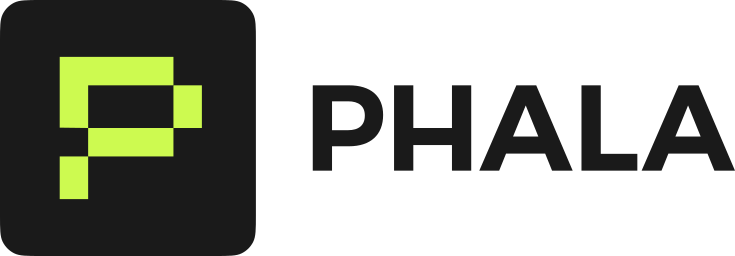CVM Templates
NextJS & Python
Quick start guide for deploying confidential applications on Phala Cloud.
There are a couple templates that we offer to allow you to get started without any heavy lifting. The steps to get started are simple and easy to test in a few minutes.
Also, make sure you have gone through the Sign-up for Cloud Account section before continuing.
Next, let’s initialize the development environment:We also need to download the DStack simulator:Once the simulator is running, you need to open another terminal to start your Next.js development server:By default, the Next.js development server will listen on port 3000. Open http://127.0.0.1:3000/ in your browser and check.This repo also includes code snippets for the following common use cases:
Now we have an official docker image for our nextjs app. Let’s deploy to Phala Cloud now.
.png) You will come to a CVM configuration page. Click on Advanced and replace the default docker compose contents with the following (Make sure to replace the
You will come to a CVM configuration page. Click on Advanced and replace the default docker compose contents with the following (Make sure to replace the
%20(1)%20(1).png)
%20(1).png)
%20(1)%20(1).png) Next, let’s initialize the development environment with venv & pip:We also need to download the DStack simulator:Once the simulator is running, you need to open another terminal to start your FastAPI development server:By default, the FastAPI development server will listen on port 8000. Open http://127.0.0.1:8000/tdx_quote in your browser to get the quote with reportdata Now we have an official docker image for our nextjs app. Let’s deploy to Phala Cloud now.
Next, let’s initialize the development environment with venv & pip:We also need to download the DStack simulator:Once the simulator is running, you need to open another terminal to start your FastAPI development server:By default, the FastAPI development server will listen on port 8000. Open http://127.0.0.1:8000/tdx_quote in your browser to get the quote with reportdata Now we have an official docker image for our nextjs app. Let’s deploy to Phala Cloud now..png) You will come to a CVM configuration page. Click on Advanced and replace the default docker compose contents with the following (Make sure to replace the
You will come to a CVM configuration page. Click on Advanced and replace the default docker compose contents with the following (Make sure to replace the %20(1).png) Now you can interact with your application by going to the Network tab and making calls like the following.
Now you can interact with your application by going to the Network tab and making calls like the following.%20(1).png)
%20(1).png)
%20(1).png)
%20(1).png)
%20(1).png)
Before You Start
Make sure you have Docker Desktop or OrbStack started before you begin.Also, make sure you have gone through the Sign-up for Cloud Account section before continuing.
Phala Cloud Next.js Starter
This is a template for developing a Next.js-based app with boilerplate code targeting deployment on Phala Cloud and DStack. It includes the SDK by default to make integration with TEE features easier. This repo also includes a default Dockerfile and docker-compose.yml for deployment.Requirements
Development
First, you need to clone this repo:/api/tdx_quote: Thereportdataistestand generates the quote for attestation report viatdxQuoteAPI./api/tdx_quote_raw: ThereportdataisHello DStack!and generates the quote for attestation report. The difference from/api/dx_quoteis that you can see the raw textHello DStack!in Attestation Explorer./api/eth_account/address: Using thederiveKeyAPI to generate a deterministic wallet for Ethereum, a.k.a. a wallet held by the TEE instance./api/solana_account/address: Using thederiveKeyAPI to generate a deterministic wallet for Solana, a.k.a. a wallet held by the TEE instance.
/api/info: Returns the TCB Info of the hosted CVM.
Build and Publish to Docker Registry
You need to build the image and push it to DockerHub for deployment. The following instructions are for publishing to a public registry via DockerHub:For this to be logged into Docker to push to registry. Run docker login to login in the CLI.
Build and Publish with Docker CLI
Build and Publish with Phala Cloud CLI
Deploy to Phala Cloud
You can copy and paste thedocker-compose.yml file from this repo to see the example up and running.
Deploy in Phala UI
Go to your Phala Cloud dashboard and click Deploy. You will have an option for deploying via docker compose file. Click on this option to deploy..png)
<docker-username>with your own:
%20(1)%20(1).png)
Deploy via Phala Cloud CLI
For those using the CLI, you can deploy from the terminal with:Make sure to change the
imagefield to match your published docker image (ex: hashwarlock/my-app:latest)Interact with Your Next.js App in Phala Cloud
Your application should be deployed now to your Phala Cloud dashboard. Go to the Network tab to be able to open your application.%20(1).png)
%20(1)%20(1).png)
Phala Cloud Python Starter
This is a template for developing a FastAPI-based app with boilerplate code targeting deployment on Phala Cloud and DStack. It includes the SDK by default to make integration with TEE features easier. This repo also includes a default Dockerfile and docker-compose.yml for deployment.Development
In this tutorial, we’ll start with venv and pip. First, you need to clone this repo:test.Build and Publish with Docker CLI
Build and Publish with Phala Cloud CLI
Deploy to Phala Cloud
You can copy and paste thedocker-compose.yml file from this repo to see the example up and running.Deploy in Phala UI
Go to your Phala Cloud dashboard and click Deploy. You will have an option for deploying via docker compose file. Click on this option to deploy..png)
<docker-username>with your own:%20(1).png)
%20(1).png)
%20(1).png)
%20(1).png)
/derive_key
%20(1).png)
/eth_account
%20(1).png)
/sol_account

